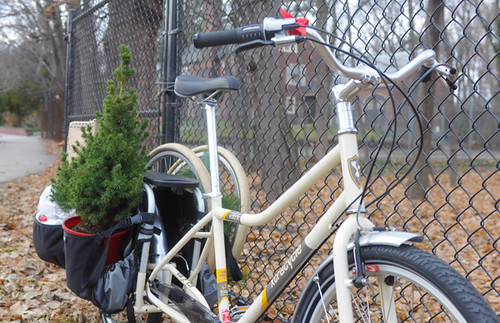
(Photo: Approaching crux # 1 of MF (5.9) in the fog. Is there a climber up there?)
The weather gods have been joking around with me.
Thanksgiving weekend was stunning. We had record highs, in the sixties and seventies, and abundant sunshine. I had a full agenda of stuff going on. This was joyous, important, family stuff. Stuff that I wouldn't dream of missing, it goes without saying.
So there was no way I could go climbing over this beautiful weekend. But I had to take advantage of the warm-weather window somehow. It was killing me to let it just roll by; this could be our last good climbing weather until next Spring. Surely, I thought, there must be something I could do?
I decided to take a vacation day on Tuesday to go to the Gunks.
The only problem was that it was expected to rain. After reviewing the forecast, I decided to go for it anyway. It was going to be warm, and the rain wasn't supposed to come until the late afternoon. A pretty full day was possible, even likely, I told myself. And the weather report for the following days called for deteriorating conditions: more rain and then colder temperatures. My obsessed mind saw Tuesday as my final chance of the year.
Parker agreed to meet me. We'd climbed together once before, in early summer. Back then we were both leading similar climbs but since that time Parker had been climbing a lot, and it sounded like he'd been ripping it up. I was eager to see what he could do. I told him I wanted to climb MF, one of my big goals for . He wanted to do Amber Waves of Pain (5.10a), which I was really excited about climbing (as a second) as well.
When I got up on Tuesday morning it was pretty gloomy out. During the drive up from the city I grew concerned about how foggy it was. The air felt damp. I worried that the cliffs would be coated in a slick, wet mist. It was an unpleasant experience I'd had before.
Then at the Sloatsburg rest stop, as I stood there pumping gas, I detected rain. Not just wet fog, but actual rain.
I paused to search the sky. Were these really drops of rain, falling from the heavens to the earth?
Yes, it was definitely raining.
It grew heavier as I stood there.
This wasn't supposed to happen! Not until later.
I was furious. I started yelling into the air. "Stop it! Stop raining!"
I'm sure I resembled a crazy person.
I got back in my car and started driving faster than before. I'm not sure why-- was I trying to outrun the rain? I kept hoping it wouldn't be like this in New Paltz.
The rain stopped, thankfully, before I got to Exit 18. I couldn't tell whether the cliffs had seen any precipitation. Actually, I couldn't tell whether the cliffs were even there. They were invisible, hidden by dense fog. This was not a good sign.
As I drove to the stairmaster parking lot I saw that the roads were wet. Also not a good sign. If the roads were wet, the rock was likely wet too.
Upon his arrival at the empty parking lot, Parker remarked that we seemed to be the only idiots intent on climbing. But since we were already at the cliffs, we decided we might as well go see if the rock was, by some miracle, dry.
We went straight up to the Mac Wall to look at MF. Described by Dick Williams as "THE standard for 5.9 in the Gunks," MF has a reputation as a tough climb. (As you might have guessed, the letters in the name stand for "Mother F**ker.") The first pitch has two cruxes, the first coming at an awkward, scary move around a corner, and the second involving some thin moves over a bulge. Pitch two has just one crux: a big roof.
I've been working up to MF all year-- all my climbing life, really. I knew on Tuesday as I stood before the route that this could be my last chance to climb it before the end of the season. But I was scared to try it if the rock was damp. Hell, I was scared to try it, period. Even in perfect conditions. Maybe in this iffy weather it was beyond scary. Maybe it was a stupid idea.
But Parker touched the rock and said he thought we were okay. It seemed dry to him. "Feel it," he said. "There's plenty of friction!"
I wanted this climb. Badly. I put my hand on the rock, and it appeared Parker was right. Even though we were surrounded by mist, the rock felt fine. I decided to do the climb. I could always bail if it started really raining. It's only gear, I figured. Who cares if I leave a piece or two behind? Don't I have a catchphrase that covers this situation?
Yes I do: Carpe Diem, bitches.
I tied in and headed upward.
The early going on pitch one is tricky. There is a steep bit right off the ground, and you have to make a few moves before you get any pro in. Maybe this part of the climb just seemed hard to me because I was a bundle of nerves. The conditions were making me jittery. I stepped off the route, back to the ground, just after I started because the fog suddenly turned to rain. But then in a minute it turned back to fog again.
I went back at it, placing two pieces at the first opportunity.
After the initial moves the pitch jogs left, then back right to the big overhang. I moved slowly, checking each foothold, fearful I'd pop off. I placed a ton of pro. As I approached crux one, it seemed much more intimidating and difficult than it did from the ground. It is steep there. It is pumpy to hold on. You can see the horn thingy that you need to grab as well as the foothold that will bring you around the corner, but it seems kind of improbable that this move will work out well.
On the bright side, the pro is great. There's a pin just where you want it and another piece can be put there to back it up. The fall is clean. The holds are good. You can stand there for a good long while, shaking out each hand in turn as you reflect on the life you've lived, and the leap you're about to take.
I hemmed and hawed there a long time, but in the end I found no real trick to the move. You just have to commit. Grab the horn, get your right foot on that hold, and go. And then it's about balance. Shift slowly to the right foot and keep inching to the right. The holds are further around the corner than you want them to be, but they exist, trust me!

(Photo: Having placed pro, I'm getting ready to move through the bulging crux # 2 on pitch one of MF (5.9).)
I spent even longer hemming and hawing over the second crux. I didn't want to blow it. My flash of MF was within reach, yet still so far away. Luckily there's a good stance below the bulge from which you can think over the moves as much as you like. Again the pro is good. There is a horizontal right below the bulge (quite slimy on Tuesday, but it took a cam), and an irregular pod/handhold up in the bulge in which I managed to seat a solid green Alien. This last placement made me feel really good. I clipped the piece direct and knew if I fell I wouldn't go far.
When I finally went for it the moves were not bad. The holds were small but positive, and before I knew it I had the jugs.
As I hit the chains I was thrilled. It had been a slow lead, a methodical lead, but it had been a successful onsight lead of MF. I was no longer breaking into 5.9. I felt solid in the grade. I couldn't ask for anything more.
Parker started following me up pitch one. I heard him say something about a nut.
"Did I place a crummy nut?" I asked.
"No!" he replied. "I said YOU'RE nuts! I can't believe you did this pitch. The rock feels so slimy!"
So much for Mr. "Go For It, There's Plenty of Friction!"
I tried to remind Parker that his enthusiasm is what got me to climb the route in the first place, but he wasn't accepting the blame. For some reason, he was convinced that I was the crazy one.
I have to say it didn't feel so slimy to me. By the time the pitch was over I'd forgotten all about the weather. I thought the rock was okay, and I really wanted to continue and do pitch two. Parker said if we kept going I'd be leading. He'd led the pitch before and he had no ambition to lead any longer, given the conditions.

(Photo: Examining the roof on pitch two of MF (5.9).)
Pitch two begins with easy moves directly to the right from the bolted anchor, around a small corner. Then it's straight up to the roof. Just beneath the roof is a pin. After clipping the pin I spent a lot of time experimenting and feeling around, trying to find some holds, any holds, that I could use to get up to the obvious horizontal that was out of reach a few feet above the roof.
It's tricky because you can't really see what's just over the roof, and there are no footholds right under the pin. So you paw around over your head, finding nothing. Then you paw around to your left, finding nothing. Then you retreat to the stance to the right of the pin, shake out, and get ready to do it all over again.
I found some really poor crimps around the pin, and kept trying to contrive a way to use them to reach the horizontal over the roof. But it wasn't working out.
After a while I looked at Parker, who was standing just a few feet to my left. I said "I'm about to have you take so I can hang on this stupid pin."
"Dude, your feet are, like, on a ledge," he replied.
"Yeah, but I'm getting frustrated."
I was tired of going back and forth. I wanted to rest and look it over. But just in time I finally found the crucial hold. I'm not going to spoil the details. It makes reaching the horizontal a breeze! And it's hiding right there, in front of your face.
As soon as I had that hold, I stepped right up to the horizontal and clipped the second pin. Then I placed a cam to back it up, even though I was already feeling the pump clock ticking away. Above me I could see the creaky little flake mentioned by Dick in his guidebook. It was the next hold. The path was obvious. It was time to go. A couple quick, pumpy moves and I was through the crux, standing at the big horizontal that heads left. Pitch two was basically in the bag.
Although I really enjoyed the crux, I didn't think the rest of the pitch was nearly as nice. The difficulty level decreases greatly and there's some questionable rock. After traversing left, the pitch follows an obvious corner to the GT Ledge, but it seems numerous other paths can be taken to the finish. It all goes through similar, moderate territory.

(Photo: Parker coming up the final bits of pitch two of MF (5.9).)
Parker reached me on the GT Ledge just as a real storm started to roll in. We could see the rain falling over New Paltz as we set up to rappel and by the time we got to the ground it had reached the cliff. Our climbing day was over after just two pitches.
Ah, but what a pair of pitches.
I realize this particular trip to the Gunks was a waste of a vacation day. I know I've been clinging to summer, to the climbing season. It's been good and I don't want it to end. I probably should have gotten out of bed on Tuesday, looked out the window, and called it off. That would have been the sensible thing to do.
But then I would have missed MF.
And MF I will cherish. It's so nice to have my last climbs of the season confirm that I've made progress. Maybe I'll still be able to squeeze one more milestone into the year. And maybe not. It doesn't matter. It's been a great year either way.
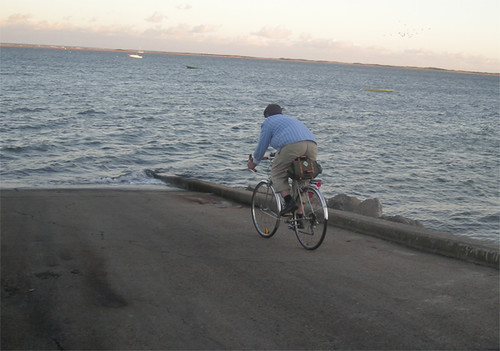
 We had descended into the canyon, and now were going up to where the drawings are located.
We had descended into the canyon, and now were going up to where the drawings are located. The overhang sheltered the drawings for many years. But time and changing environmental conditions have taken their toll.
The overhang sheltered the drawings for many years. But time and changing environmental conditions have taken their toll. The tour guide discussing the drawings with one of the group.
The tour guide discussing the drawings with one of the group. This image has been enhanced a little to bring out the faded drawings. It is amazing to consider that these were made several thousand years ago, and that we will likely never know what they meant.
This image has been enhanced a little to bring out the faded drawings. It is amazing to consider that these were made several thousand years ago, and that we will likely never know what they meant.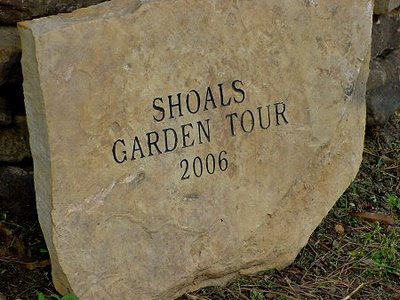















 Albion, Indiana ~ January 20, ..
Albion, Indiana ~ January 20, ..



 Great Sand Dunes National Park & Preserve
Great Sand Dunes National Park & Preserve Updates: the weather observations for Paradise measured 11.3 inches in the past 24 hours! At Camp Muir, the temps hovered in the mid 30's (probably rain) but it was the wind speed that remained impressive. Gusts of 121 MPH were recorded and the average wind speed for one hour in midday was 101!! The Nisqually River (pictured right) is nothing short of a boiling chocolately torrent, as is every other creek and stream around here. The river sounds like a freight train and the ground trembles as large boulders and old-growth trees jostle into the flow. The air even smells of glacial mud, cedar and pine.
Updates: the weather observations for Paradise measured 11.3 inches in the past 24 hours! At Camp Muir, the temps hovered in the mid 30's (probably rain) but it was the wind speed that remained impressive. Gusts of 121 MPH were recorded and the average wind speed for one hour in midday was 101!! The Nisqually River (pictured right) is nothing short of a boiling chocolately torrent, as is every other creek and stream around here. The river sounds like a freight train and the ground trembles as large boulders and old-growth trees jostle into the flow. The air even smells of glacial mud, cedar and pine. 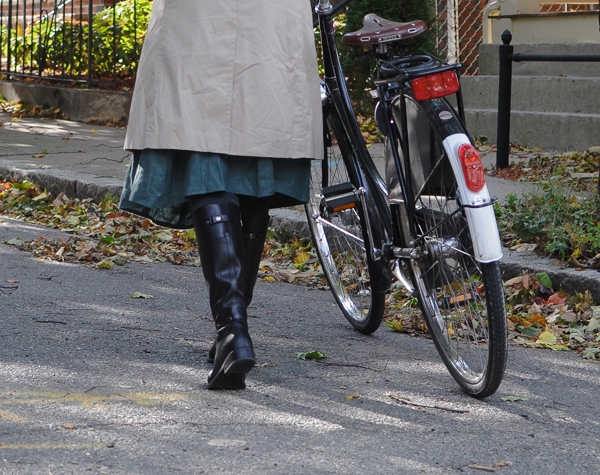 A couple of my recent posts have generated some engaging commentary on "form vs function" and the validity of aesthetic preoccupations in cycling. I put the phrase "form vs function" in quotation marks, because I do not view it as a dichotomy that needs to be resolved. For me, the two concepts are in a symbiotic relationship, whereby one enhances the other and is incomplete without the other. I readily acknowledge my interest in aesthetics. But I stop well short of putting aesthetic factors before practical ones, which I hope comes across clearly throughout Lovely Bicycle.
A couple of my recent posts have generated some engaging commentary on "form vs function" and the validity of aesthetic preoccupations in cycling. I put the phrase "form vs function" in quotation marks, because I do not view it as a dichotomy that needs to be resolved. For me, the two concepts are in a symbiotic relationship, whereby one enhances the other and is incomplete without the other. I readily acknowledge my interest in aesthetics. But I stop well short of putting aesthetic factors before practical ones, which I hope comes across clearly throughout Lovely Bicycle. To me, functionality means that a bicycle must be good at what it was designed to do. For instance, a racing bicycle is designed with the goal of winning races. It therefore must possess qualities such as the ability to gain speed quickly and extreme maneuverability. Anything in the design of a racing bicycle that detracts from its ability to win races is a functional flaw. By the same token, an urban transport bicycle is designed to serve as a viable means of transportation for the city dweller. It therefore must possess features that enable the cyclist to comfortably and conveniently travel in everyday clothing, to observe their surroundings, to securely transport their bags and packages, and to travel in the dark. Anything in the design of an urban transport bicycle that detracts from this is a functional flaw.
To me, functionality means that a bicycle must be good at what it was designed to do. For instance, a racing bicycle is designed with the goal of winning races. It therefore must possess qualities such as the ability to gain speed quickly and extreme maneuverability. Anything in the design of a racing bicycle that detracts from its ability to win races is a functional flaw. By the same token, an urban transport bicycle is designed to serve as a viable means of transportation for the city dweller. It therefore must possess features that enable the cyclist to comfortably and conveniently travel in everyday clothing, to observe their surroundings, to securely transport their bags and packages, and to travel in the dark. Anything in the design of an urban transport bicycle that detracts from this is a functional flaw. The notion of comfort is equally important, and equally subjective. We need to be comfortable on a bicycle in order to enjoy riding it, or even to tolerate riding it. The more comfortable we are, the more we ride, and the safer our cycling behaviour. An uncomfortable bicycle can make commuting, touring and even racing a nightmare.There are many, many factors that go into what makes a bicycle comfortable - from the geometry and material of the frame, to the positioning of the saddle and handlebars, to other, more elusive aspects.
The notion of comfort is equally important, and equally subjective. We need to be comfortable on a bicycle in order to enjoy riding it, or even to tolerate riding it. The more comfortable we are, the more we ride, and the safer our cycling behaviour. An uncomfortable bicycle can make commuting, touring and even racing a nightmare.There are many, many factors that go into what makes a bicycle comfortable - from the geometry and material of the frame, to the positioning of the saddle and handlebars, to other, more elusive aspects. Finally, I believe that the aesthetics of a bicycle are no less crucial in the enjoyment of the overall cycling experience. Put simply, aesthetics is how appealing or attractive we find the bicycle to be. Do we enjoy looking at it? Does it fill us with excitement and pleasure? Do we feel compelled to touch it, to ride it? It is about an emotional response, and it is about individual definitions of beauty.
Finally, I believe that the aesthetics of a bicycle are no less crucial in the enjoyment of the overall cycling experience. Put simply, aesthetics is how appealing or attractive we find the bicycle to be. Do we enjoy looking at it? Does it fill us with excitement and pleasure? Do we feel compelled to touch it, to ride it? It is about an emotional response, and it is about individual definitions of beauty. The importance of functionality, comfort and aesthetics in the cycling experience extends beyond their individual roles; it is the interaction of the three that is crucial. How useful is the functionality of a bicycle that is not comfortable? How useful is the comfort of a bicycle if it is not functional? What good is a beautiful bicycle that is either uncomfortable or non-functional? And how sad it is for a bicycle to be functional and comfortable, but not excite you or make you smile?The most successful bicycle design is one where functionality, comfort, and aesthetics intersect.The graceful sweep of a loop frame is not only visually pleasing, but allows easy step-through. A handle bar bag secured to a randonneur-style front rack is not only handsome, but extremely useful on long trips. Form and function are best enjoyed as a happy couple.
The importance of functionality, comfort and aesthetics in the cycling experience extends beyond their individual roles; it is the interaction of the three that is crucial. How useful is the functionality of a bicycle that is not comfortable? How useful is the comfort of a bicycle if it is not functional? What good is a beautiful bicycle that is either uncomfortable or non-functional? And how sad it is for a bicycle to be functional and comfortable, but not excite you or make you smile?The most successful bicycle design is one where functionality, comfort, and aesthetics intersect.The graceful sweep of a loop frame is not only visually pleasing, but allows easy step-through. A handle bar bag secured to a randonneur-style front rack is not only handsome, but extremely useful on long trips. Form and function are best enjoyed as a happy couple. Here is Tuffee, our Border Collie, Spanky the small brown dog, and Daisy the large white Great Pyrenees Pup. Yes she is only a pup and over 100 pounds. I think she was about 8 months old here.
Here is Tuffee, our Border Collie, Spanky the small brown dog, and Daisy the large white Great Pyrenees Pup. Yes she is only a pup and over 100 pounds. I think she was about 8 months old here. May 1979. I can still feel the freezing cold of the water as I walked through the stream to the dunes. The warmth of the sun and the chill of the morning breeze. The quietness broken only by the occasional laughter and voices of other visitors. It was a time of change. One stage of life ending and another beginning. A return to civilian life after 9 1/2 years in the Navy.
May 1979. I can still feel the freezing cold of the water as I walked through the stream to the dunes. The warmth of the sun and the chill of the morning breeze. The quietness broken only by the occasional laughter and voices of other visitors. It was a time of change. One stage of life ending and another beginning. A return to civilian life after 9 1/2 years in the Navy.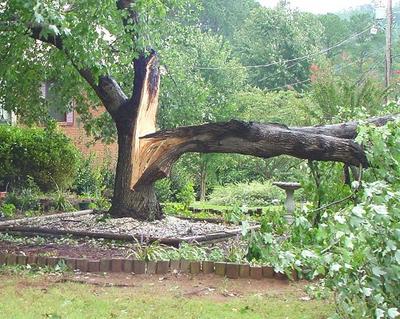





 Two hikers suffering from hypothermia and frostbite were airlifted from Camp Muir on Mount Rainier at 6:15 this morning, with the help of a Chinook helicopter operated by members of the Army Reserve’s 159th Aviation Regiment at Fort Lewis. They were taken to Madigan Hospital and from there by ground transportation to Harborview Medical Center in Seattle.
Two hikers suffering from hypothermia and frostbite were airlifted from Camp Muir on Mount Rainier at 6:15 this morning, with the help of a Chinook helicopter operated by members of the Army Reserve’s 159th Aviation Regiment at Fort Lewis. They were taken to Madigan Hospital and from there by ground transportation to Harborview Medical Center in Seattle.
 A month ago, vandals pulled out their chain saw and cut the Shoe Tree down. No one except the culprits saw the deed being done. As it so happens, the Shoe Tree was on property owned by the Bureau of Land Management so if the culprits are ever found, they will face federal charges. The incident is still under investigation.
A month ago, vandals pulled out their chain saw and cut the Shoe Tree down. No one except the culprits saw the deed being done. As it so happens, the Shoe Tree was on property owned by the Bureau of Land Management so if the culprits are ever found, they will face federal charges. The incident is still under investigation.





